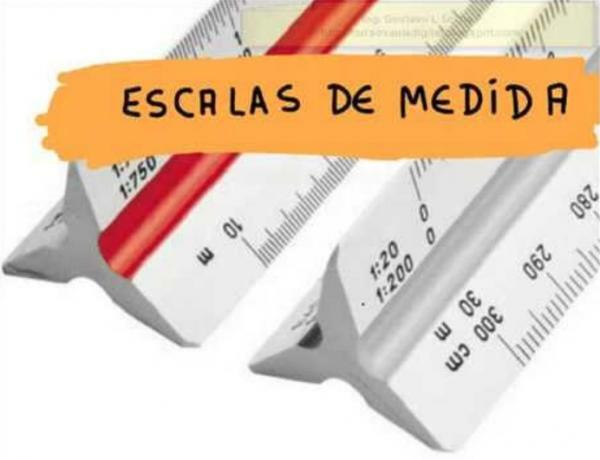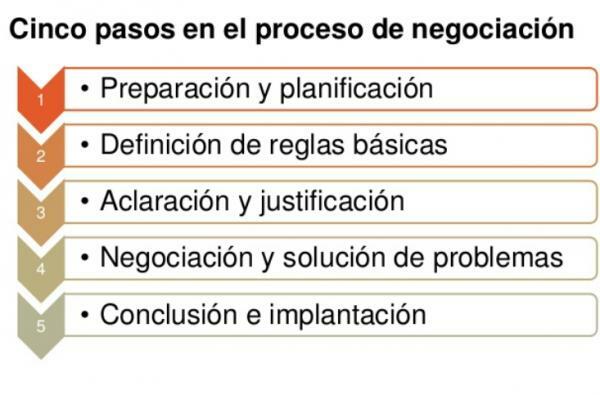
For statistical population it is understood the set of all the elements that share one or more characteristics. Each of the elements that make up a population is generically called statistical entities, and according to the number of entities found in a population, this can be finite or infinite A show is a representative subset of the elements of a population. An unrepresentative sample can provide a distorted, and therefore incorrect, description of the population. Statistics has developed a specific field in which methods for the extraction of representative samples of a population are studied, and which are included under the name of sampling.
Index
- Parameter and statistic
- Measurement and measurement scales
- Nominal scale
- Ordinal scale
- Interval scale
- Ratio scales
- Variables Classification and Notation
- Notation of variables
Parameter and statistic.
Any of the numerical values that refer to the population they are called parameter.
Any of the summary values obtained in the sample are called statistical.
The parameters population have unique values, on the other hand, statistics they can have so many different values as samples are drawn from the population. Parameters are symbolized with Greek letters (m, p, s.), While statistics are symbolized with capital letters. Feature and Mode One characteristic it is a property of the individuals of a population.
A modality it is each of the variants that a characteristic manifests itself. P.E. Marital status, or religious beliefs, are characteristics that present few modalities. In the field of Psychology the characteristics are such as personality, memory, perception, attention, intelligence, motivation, etc.
Measurement and measurement scales.
Measurement is the process by which objects or characteristics are assigned numbers according to certain rules.
A measurement scale it is, in a general sense, a procedure by which a set of (different) modalities are related in a one-to-one way to a set of (different) numbers.
That is, each modality corresponds to a single number, and each number corresponds to a single modality.
Considering the relationships that can be verified empirically between the modalities of the objects or characteristics, four types of measurement scales can be distinguished: nominal, ordinal, interval Y of reason.
Another concept related to measurement scales is that of permissible transformation, which refers to the problem of uniqueness of measure and that can be posed in the following way: are the numerical representations that we make of the modalities the only possible ones? NOT.
Nominal scale.
It is used in all those modalities or characteristics in which the only empirical check that can be made is that of equality or inequality.
Let us suppose that there is a set of n elements (o1, o2,., On) with a certain characteristic that takes on k different modalities. We represent the modality of a generic object oI by m (oi), and the number that we assign to this modality is represented by n (oi).
The rule for assigning numbers to objects, so that the empirical relationships observed between them are preserved, must meet the following conditions:
- If n (oi) = n (oj), then m (oI) = m (oj)
- If n (oi) ¹ n (oj), then m (oI) ¹ m (oj)
The admissible transformation is: anyone who preserves the equality-inequality relations of the objects with respect to a certain characteristic.
Ordinal scale.
Objects can manifest a certain characteristic to a greater degree than others. Eg the hardness of minerals.
Suppose I know has a set of n objects (o1, o2,., on) and each one has a certain magnitude of a certain characteristic [m (o1), m (o2),., m (on)].
The scale for assigning numbers to objects [n (o1), n (o2),., N (on)], so that they reflect those different degrees in which the objects present the characteristic, must meet the following terms:
- If n (oi) = n (oj), then m (oi) = m (oj)
- If n (oi)> n (oj), then m (oi)> m (oj)
- If n (oi)
Allowable transformation: any transformation it is valid as long as it preserves the order of magnitude, increasing or decreasing, in which the objects present a certain characteristic.
Interval scale.
It allows to establish the equality or inequality of the differences between the magnitudes of the measured objects. Eg thermometer, calendar.
Suppose that the values assigned to the objects are a correct numerical representation of their empirical relationships.
For all quartet of generic objects, oI, oj, ok, ol, the values assigned n (oi), n (oj), n (ok), n (ol), to the magnitudes that these objects have a certain characteristic m (oi), m (oj), m (ok), m (ol), they must meet the following terms:
- If n (oi) - n (oj) = n (ok) - n (ol),
- then m (oi) - m (oj) = m (ok) - m (ol).
- If n (oi) - n (oj)> n (ok) - n (ol),
- then m (oi) - m (oj)> m (ok) - m (ol).
- If n (oi) - n (oj)
- then m (oi) - m (oj)
- then m (oi) - m (oj)
The admissible transformations must follow a condition of the type:
- t [n (oi)] = a + b. n (oi), provided that b> 0.
That is, such a linear transformation of the initial values of an interval scale leaves the scale invariant with respect to the conditions stipulated in the previous paragraph.
This type of transformation involves a change in the two aspects that characterize the interval scale.
On the one hand, the value a, as an additive constant, causes a change in the origin.
On the other hand, factor b causes a change in the unit of measurement taken to construct the scale (only when b = 1 the unit of measurement is not altered).
Ratio scales.
Interval scales are used to measure characteristics in which the zero value does not mean the absence of said characteristic.
Values on a ratio scale have an absolute value, not an arbitrary one, or an absolute zero value that does mean no characteristic.
For all quartet of generic objects, oi, oj, ok, ol, the values assigned n (oi), n (oj), n (ok), n (ol), to the magnitudes that these objects have a certain characteristic m (oi), m (oj), m (ok), m (ol), they must meet the following terms:
- If n (oi) / n (oj) = n (ok) / n (ol),
- then m (oi) / m (oj) = m (ok) / m (ol).
- If n (oi) / n (oj)> n (ok) / n (ol),
- then m (oi) / m (oj)> m (ok) / m (ol).
- If n (oi) / n (oj)
- then m (oi) / m (oj)
- then m (oi) / m (oj)
Having an absolute scale origin, the only admissible transformation for the ratio scale is of the type: t [n (oi)] = a. n (oI), where a> 0.
Scale typeConclusions aboutAllowable transformationExamplesNOMINAL Relationships of the type "equal to" or "different from" Anyone who preserves equality / inequality Sex, race, marital status, clinical diagnosis ORDINAL Relationships of the type "greater than", "less than" or "equal to" Anyone who preserves the order or degree of magnitude of objects Mineral hardness, professional status, location ideological. INTERVAL Equality or inequality of differencesa + b.x (b> 0) Calendar, temperature, intelligence REASON Equality or inequality of reasons b.x (b> 0) Length, mass, time
Variables Classification and Notation.
A variableIn its statistical sense, it is a numerical representation of a characteristic. When a characteristic has only one modality, we say that it is a constant.
Classification by type of measurement scale:
- Variables nominal
- Variables ordinal
- Variables of interval
- Variables of reason
This type of classification is rarely used, instead three main types of variables are distinguished, which encompass the four derivatives of the type of scale:
Qualitative
- Dichotomous, when the variable has only two categories (eg. Sex)
- Politomics, if you have more than two categories.
In general, any variable measured at a higher level of the nominal scale is susceptible to being categorized; When this happens, the variable is said to have been dichotomized, if only two categories have been established, and polytomized if more have been established.
Quantitative
Discrete, if the values that the variable can assume are integers (eg. Children of a couple)
Continuous, if the variable can take any value on the scale of real numbers. Continuous variables, due to the level of precision of the measuring instruments, can be considered for practical purposes statistics as discrete variables. (When weighing an object with a 1-gram precision balance, the weight that is read is known What reported value or apparent value, while the values that limit the interval (30.5 and 31.5) are known as exact limits of measurement.
Quasi-quantitative
In the field of scientific methodology, another classification is used:
- V. Independent
- V. dependent
- V. pollutant or V. intermediate.
Notation of variables.
To symbolize the statistical variables, uppercase letters of the Latin alphabet are used, affected by a subscript, to differentiate them from constant values.
The Symbol of Addition or Summation
Let them be a series of n numbers, symbolized by X1, X2,., Xn. the expression (X1 + X2) indicates the sum of the first number in the series and the second.
The expression (X1 + X2 +. + Xn) indicates the sum of the n values of the series.
Summation rules
- If the values of a variable are multiplied by a constant, its sum will be multiplied by that constant.
- The sum of a constant c a number n times is equal to n times said constant.
- The sum of a sum with any number of terms is equal to the sum of the sum of those terms taken separately.
Consequences of the summation Consequence 1: The sum of a variable plus a constant is equal to the sum of the variable plus n times the constant
Consequence 2: The sum of the squares of a variable is not equal to the square of the sum of the variable.
Consequence 3: The sum of products of two variables is not equal to the product of their sums Double sum Suppose that a total group is decomposes into k groups with n1, n2,., nk people respectively where Xij represents the score of person I who belongs to the group j.
This article is merely informative, in Psychology-Online we do not have the power to make a diagnosis or recommend a treatment. We invite you to go to a psychologist to treat your particular case.
If you want to read more articles similar to Measurement and measurement scales, we recommend that you enter our category of Experimental psychology.


